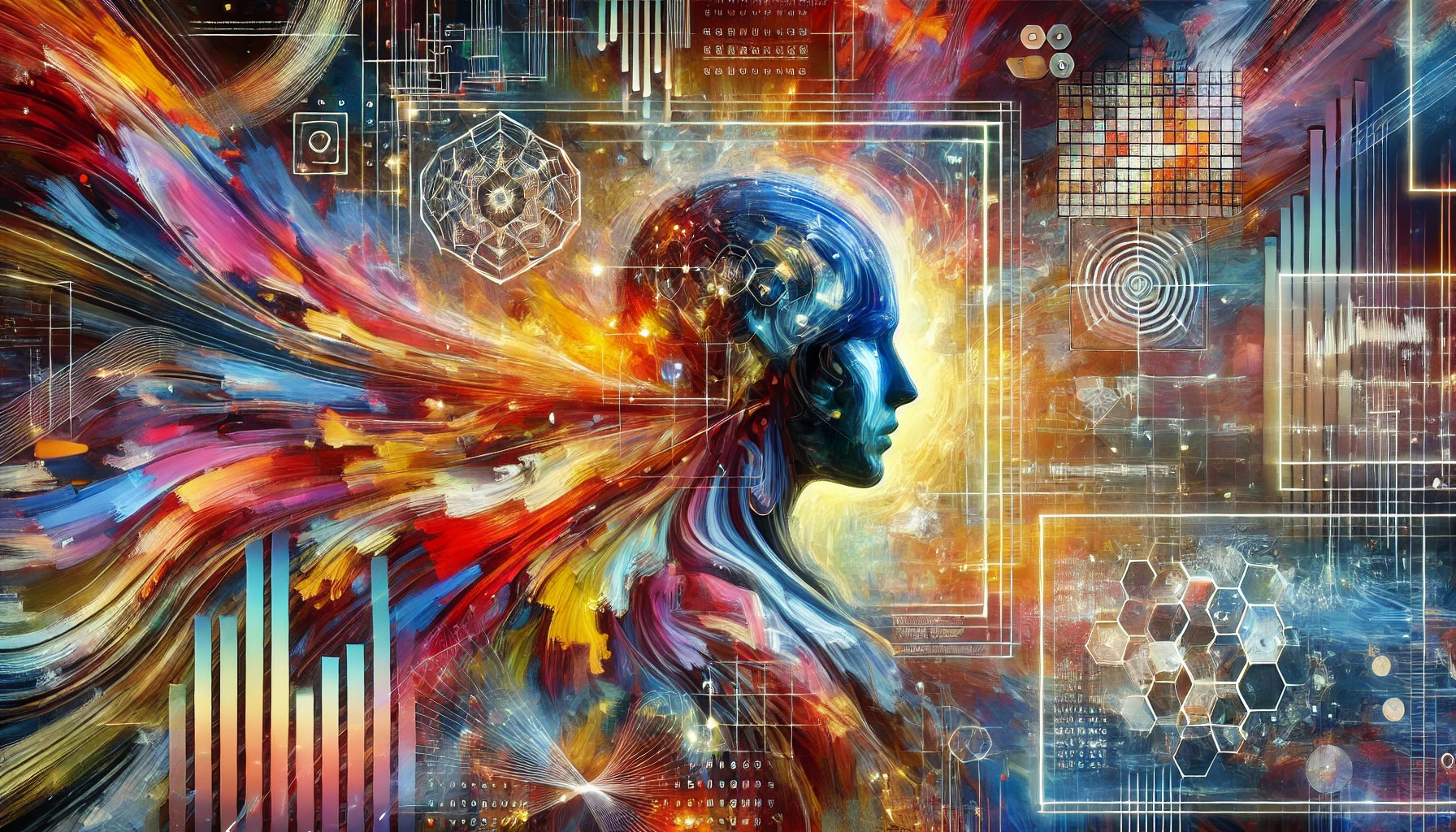Artificial Intelligence has come a long way since the early days of rigid algorithms and clunky chatbots that barely understood what you were asking them. If you’ve ever had a frustrating experience with Siri or Alexa misunderstanding you for the tenth time, you might think, “AI is cool, but it’s still kinda dumb.” But buckle up, because we’re heading into a new frontier that makes today’s AI look like a toddler fumbling with building blocks. Enter multimodal AI models—the futuristic AI that doesn’t just understand your words but also sees, hears, and thinks across multiple forms of input. It's the AI that’s going to know you better than your own dog, maybe even better than you know yourself.
If you’re like most people, you may have become desensitized to the endless hype surrounding AI. Sure, it can write essays, craft social media posts, and do your taxes—yawn. But the hidden revolution in AI isn’t just about automating tasks. It’s about understanding everything at once: your words, the images you share, the videos you watch, and the audio you listen to. Imagine having a conversation with an AI that can not only process your questions but also instantly understand what’s happening in the background of a video you show it, or even analyze the emotions conveyed in a podcast you’re listening to. That’s where we’re headed, and the implications are staggering.
Why Today’s AI Is Still a One-Trick Pony
Before we dive into what’s coming, let’s take a quick detour. The AI we use today, like GPT-4 or LLaMA, is fantastic at understanding text, but it's like trying to have a conversation with someone who’s been blindfolded and had their ears plugged. Sure, they can talk, but they can’t see the picture you’re pointing to, nor can they hear the song playing in the background. The problem is, humans aren’t limited to one sensory input at a time. We process multiple streams of information simultaneously. Imagine you’re in a meeting where your boss is giving you feedback. You’re not just hearing her words; you’re also seeing her facial expressions, noticing the tone of her voice, and perhaps even watching her click through slides on a PowerPoint presentation. All of this input helps you get the full picture.
Today's AI can’t do that. It’s a one-trick pony in a world that requires a multi-talented performer. This is where multimodal models change the game.
The Multimodal Revolution: The AI That Can Do It All
Imagine having an AI assistant that could understand every form of communication simultaneously. Not just reading an email, but also analyzing an image you attached, understanding the video link you sent, and even interpreting the tone of your voice during a video call. This is what multimodal AI models do—they take in multiple types of input and process them together to give you a response that’s far more nuanced and accurate.
It’s like upgrading from a black-and-white TV to a 4K, HDR, surround-sound cinema experience. You’re no longer dealing with AI that sees the world through a keyhole; you’re interacting with an AI that has a panoramic view. And this AI isn’t just watching the movie, it’s understanding the plot, the subtext, the lighting choices, and the soundtrack, and then offering you commentary on it all.
So, how does it work? Multimodal AI models are trained to interpret text, audio, images, and even video. These AIs don’t just process each stream of data in isolation; they merge them, creating an understanding that’s greater than the sum of its parts. The research by Yuzhuo Li and their team at the University of Alberta dives deep into how this collaboration across different modalities works—and it’s nothing short of a game-changer.
Multimodal AI Is Like Hiring an Expert Team Instead of One Superhuman
Let’s paint a picture here: Imagine you’re tasked with building a house. You could try to hire one person who’s a master electrician, an expert carpenter, a brilliant architect, and a savvy plumber all rolled into one. Sounds great, right? Except no such person exists (and if they do, they’re probably too expensive for your budget).
Now, consider the more practical approach: You hire a team. Each person specializes in a different aspect of building the house, but they work together. The electrician lays the wiring while the carpenter builds the frame. The architect designs the blueprint, and the plumber ensures everything flows smoothly. Multimodal AI is like this team—it’s not just one model doing everything; it’s a collection of specialized skills that come together to solve complex problems.
In AI terms, these “specialized skills” are different modalities—one model handles language, another deals with images, and a third processes audio. But here’s the genius part: they collaborate in real-time, just like your house-building team. The result? A smarter, faster, and more effective system that can tackle real-world problems with the depth and nuance they require.
From Customer Service to Cancer Diagnosis: Multimodal AI in Action
So, what does this all mean for you and me? The applications of multimodal AI are endless, and they’re already starting to make an impact across various industries.
Take customer service, for example. Have you ever tried explaining a problem to a chatbot and felt like banging your head against the wall because it just doesn’t get it? That’s because most chatbots are text-only—they can’t “see” the image you uploaded of the faulty product, nor can they “hear” the frustration in your voice. But imagine a customer service AI that can look at the photo you uploaded, listen to your voice, and then provide a solution based on all of that information. Suddenly, resolving your issue becomes as seamless as talking to an actual human—maybe even easier, considering how bad some human customer service can be.

Now, let’s up the ante. Imagine multimodal AI in healthcare. You walk into a doctor’s office, and instead of just describing your symptoms, you’re able to show the doctor an MRI scan, a medical chart, and even play back a recording of how your cough sounds. The AI in the room processes all of these inputs together—your spoken words, the visual scan, the audio recording—and offers a diagnosis that’s far more accurate than any single input could provide.
This isn’t science fiction. It’s already happening. The research shows that multimodal models are not only possible but are going to be the future standard in complex industries like healthcare, education, and even creative fields like filmmaking and music production.
The Bigger Picture: Why This Matters on a Global Scale
Here’s where things get serious. We’re living in an era where technology doesn’t just change how we do business or interact socially—it changes the very fabric of society. AI is already disrupting industries, but multimodal AI is set to reshape the global landscape in ways we’re only beginning to understand.
Think about the impact this could have on global inequality. Countries with advanced AI systems could leverage multimodal models to drive economic growth, improve healthcare, and solve social problems. Meanwhile, developing nations that don’t have access to these technologies might find themselves left behind, further exacerbating the digital divide.
But here’s the kicker: if we get it right, multimodal AI could also be the great equalizer. By making AI more intuitive and capable of solving complex problems, we could democratize access to advanced services. Imagine an AI system that can teach students in rural areas by showing them educational videos, reading their written responses, and even listening to their questions—all while adjusting its teaching style based on each student’s individual needs. This isn’t just about building smarter machines; it’s about building a smarter world.
The Dark Side: AI, Energy, and the Sustainability Crisis
Of course, it’s not all sunshine and rainbows. With great power comes great energy consumption. Training large models like GPT-4 or LLaMA 3 requires more electricity than a small country. It’s a bit like building a sports car that goes 0 to 60 in 3 seconds—awesome, but not exactly fuel-efficient.
In fact, according to estimates, training GPT-4 alone consumed as much electricity as 4,150 U.S. households in a year. That’s insane when you think about it. And that’s just one model. Now imagine hundreds of these models being trained across the globe simultaneously. The result? A potential energy crisis that could throw our entire power grid into chaos.
Here’s the rub: we’re racing to build the next generation of AI systems without fully considering the environmental cost. AI might solve a lot of problems, but if we’re not careful, it could create new ones that are just as serious. The future of AI can’t just be about making smarter models—it has to be about making sustainable models.
How to Keep the AI Revolution on Track: Smarter, Not Bigger
So, what’s the solution? We need to start thinking smarter, not just bigger. The current trend in AI is to throw more and more computing power at the problem, but this approach isn’t sustainable. Instead, researchers are exploring ways to make models more efficient. DeepMind is leading the charge in developing AI systems that require less energy to train and operate, without sacrificing performance.
Think of it like going from a gas-guzzling SUV to a sleek, energy-efficient electric car. The goal isn’t just to build faster AI—it’s to build AI that can do more with less. If we can figure that out, we’ll not only revolutionize technology but also create a future where AI can coexist with the environment rather than depleting it.
The AI-Driven Future: Are You Ready?
We’re at a crossroads in the evolution of artificial intelligence. Multimodal AI models are going to change the world—there’s no doubt about that. But whether they do so for better or worse depends on the choices we make today. Do we focus on building smarter, more sustainable systems? Do we ensure that these technologies are accessible to all, rather than a privileged few? And most importantly, are we ready to embrace the full potential of AI, even if it means rethinking how we interact with machines, power our economies, and protect our planet?
These aren’t just abstract questions for policymakers or tech moguls—they’re questions for all of us. Because the future of AI isn’t just about what machines can do—it’s about what we do with them.
Thought-Provoking Questions for Readers:
Where do you see AI’s role in your everyday life in the next decade? Do you think the energy consumption of AI models should be a major concern? How should we address the potential inequalities AI might create? What industries do you think will be most transformed by multimodal AI?




















Post Comment
You must be logged in to post a comment.